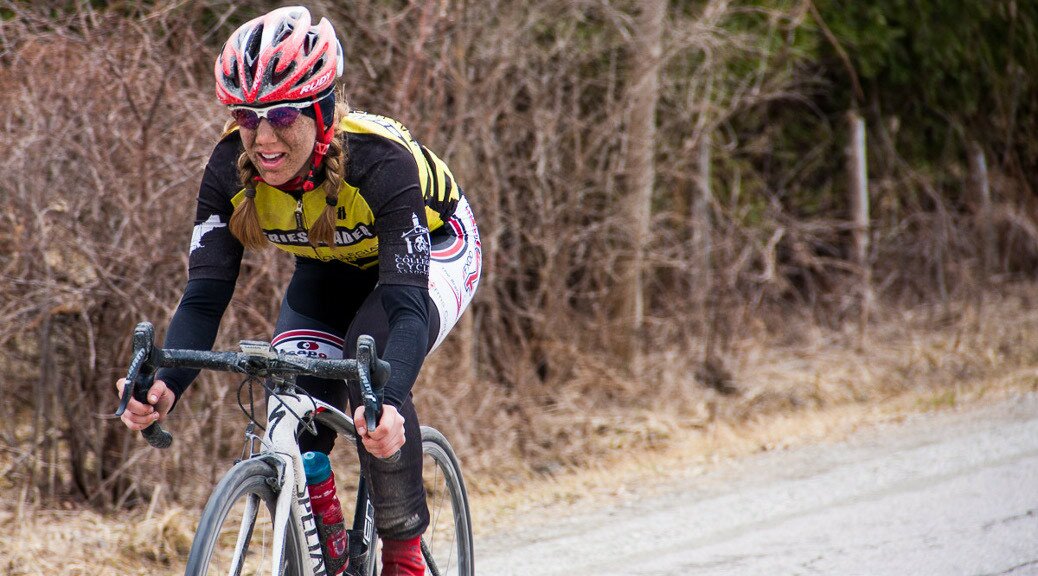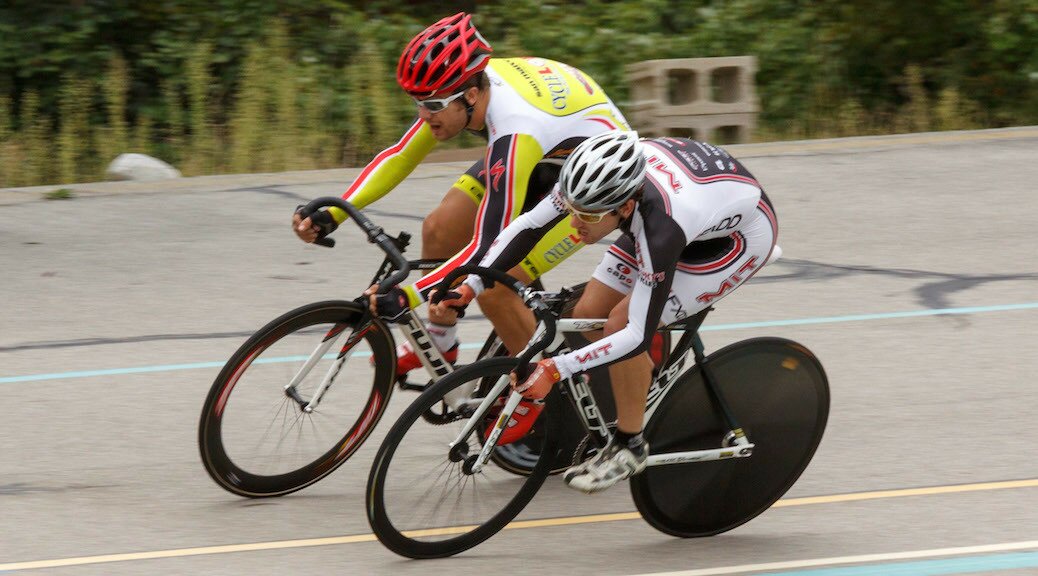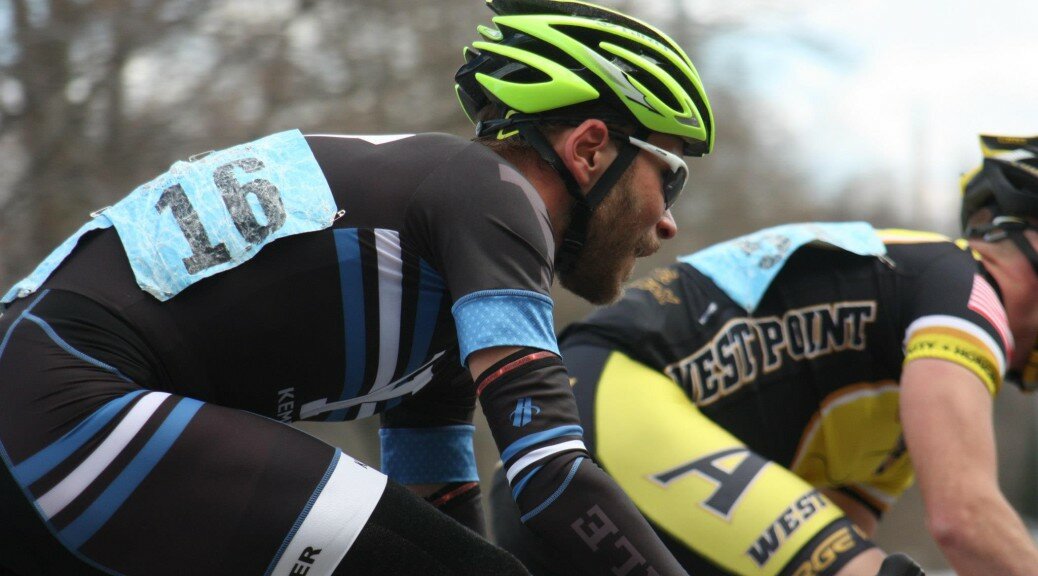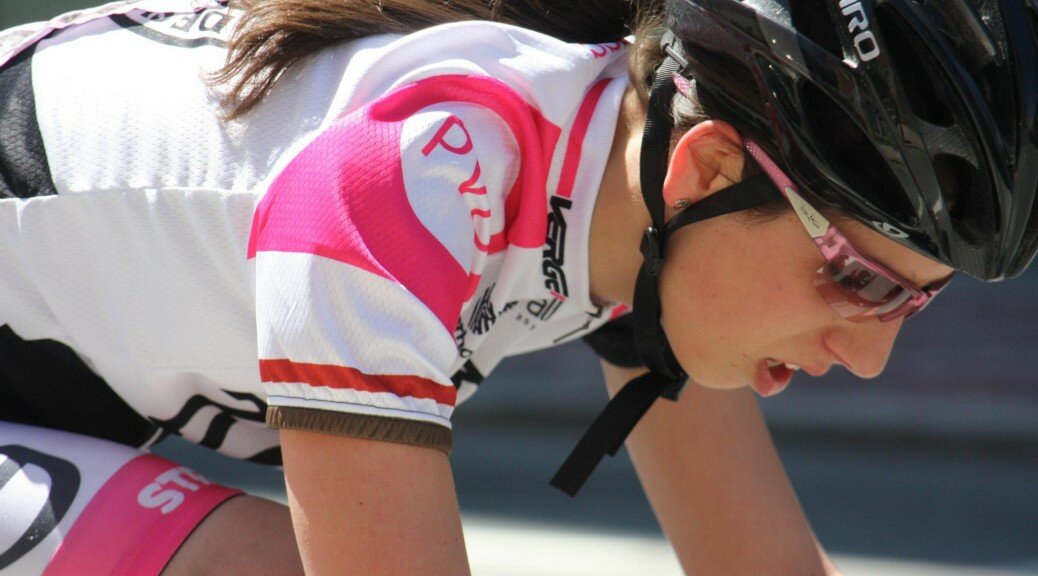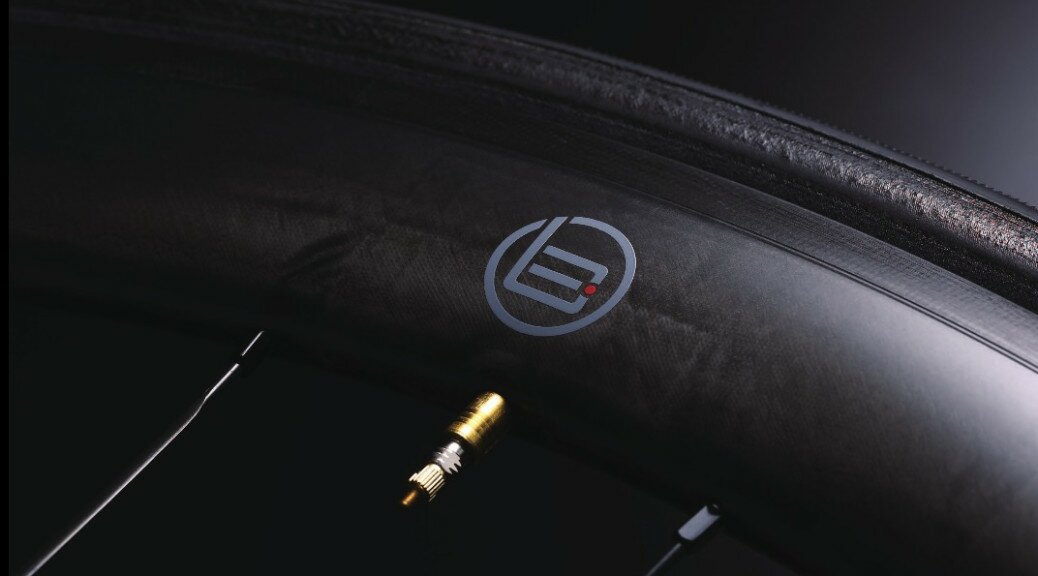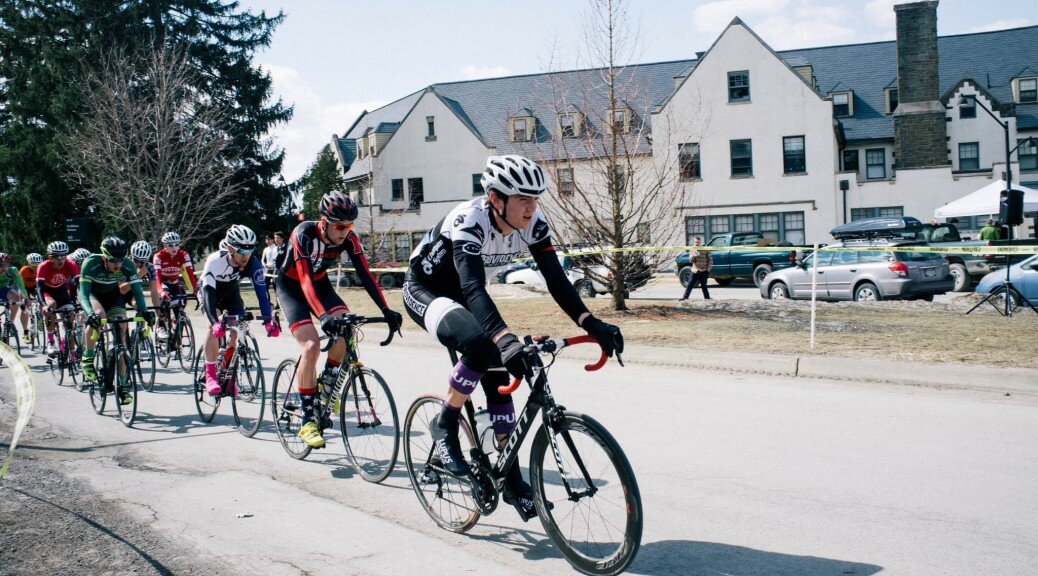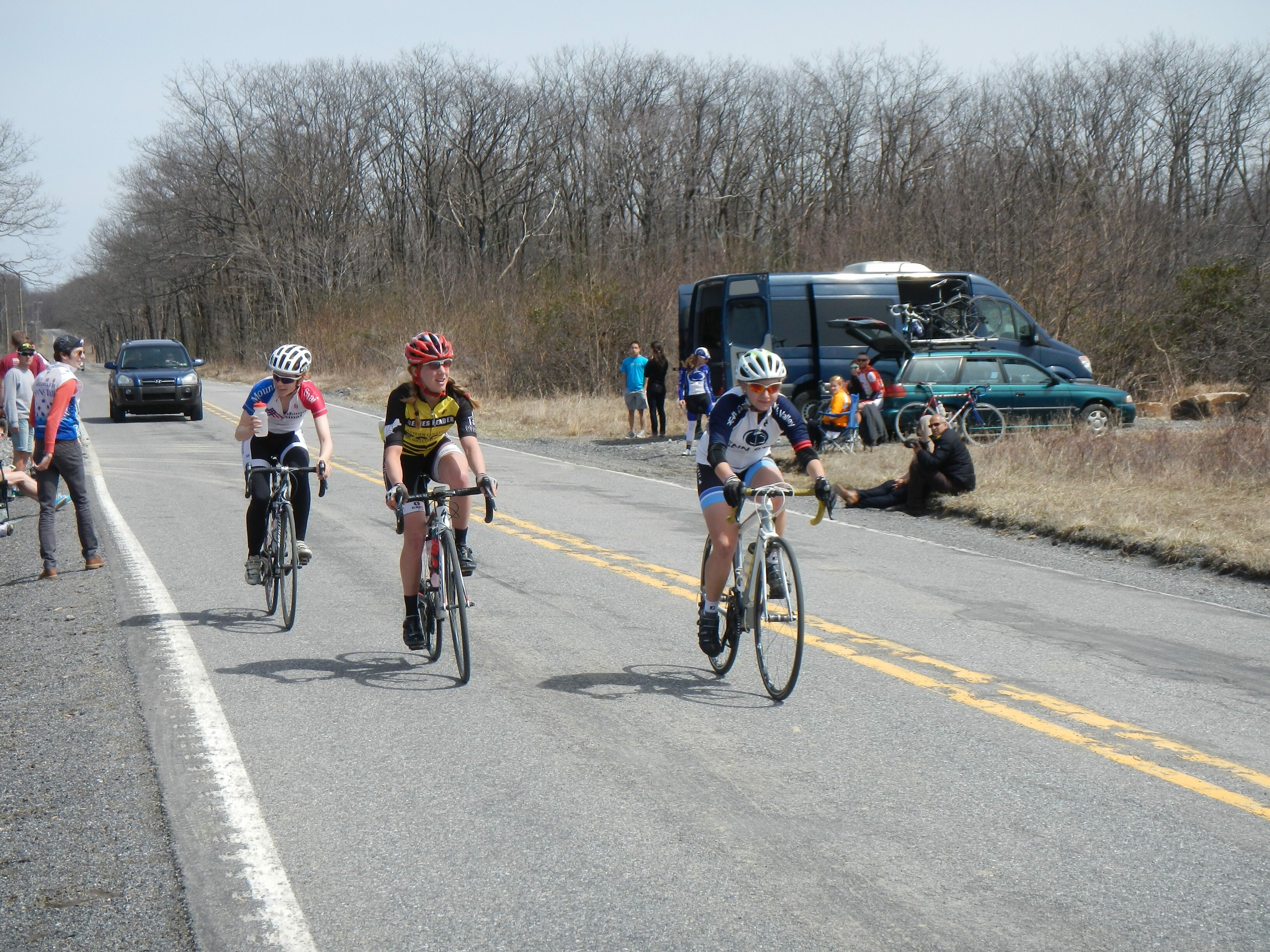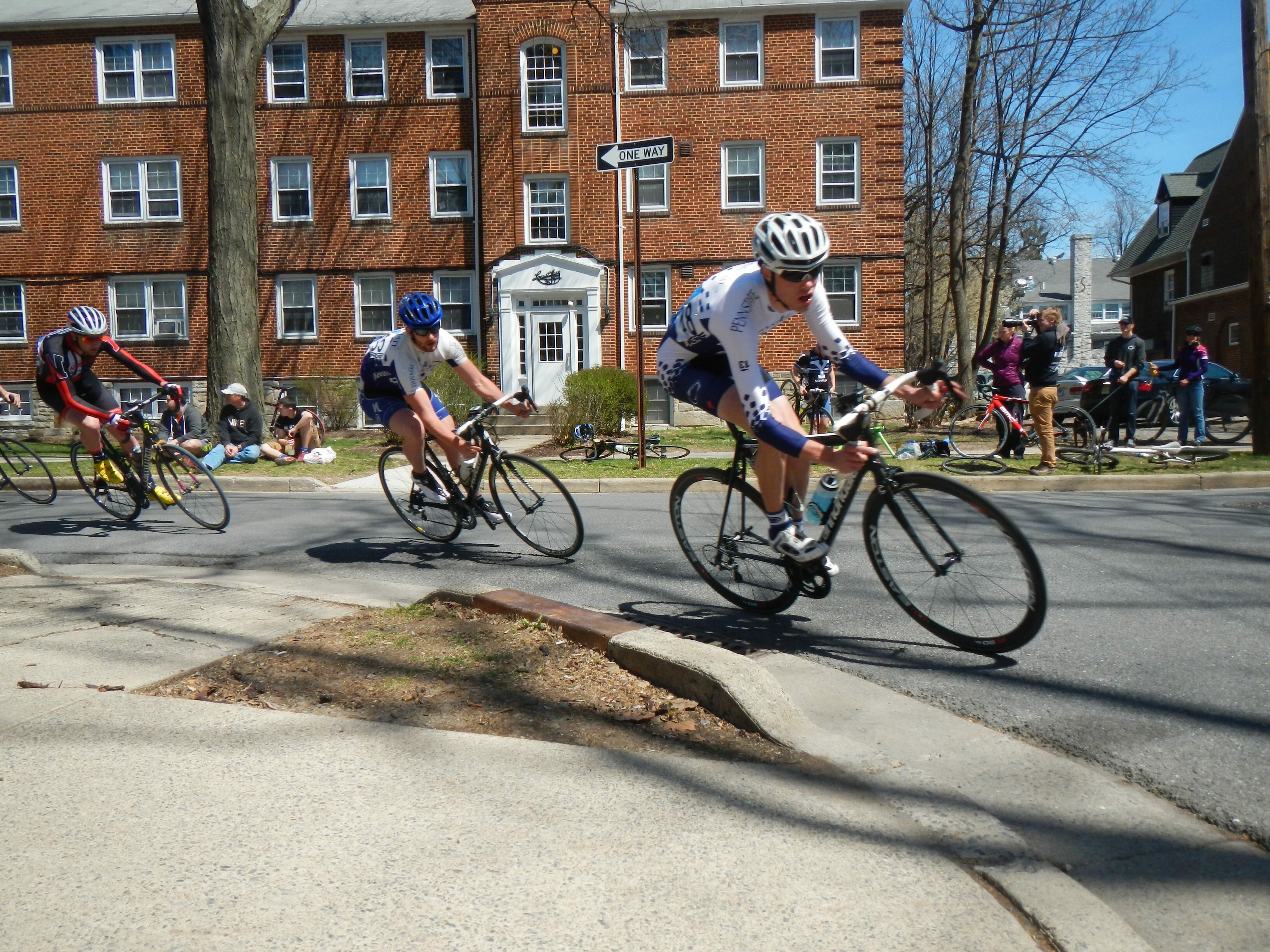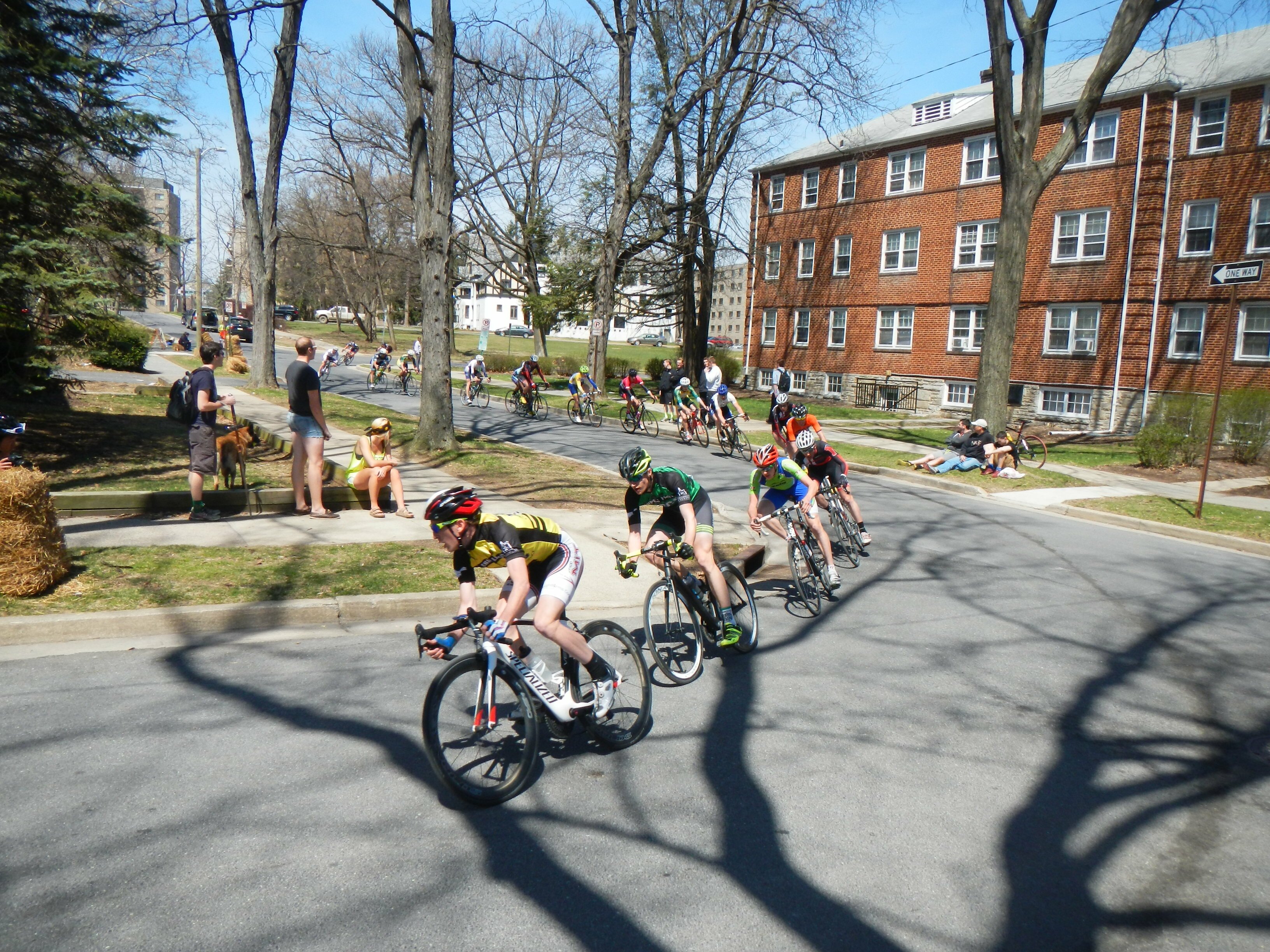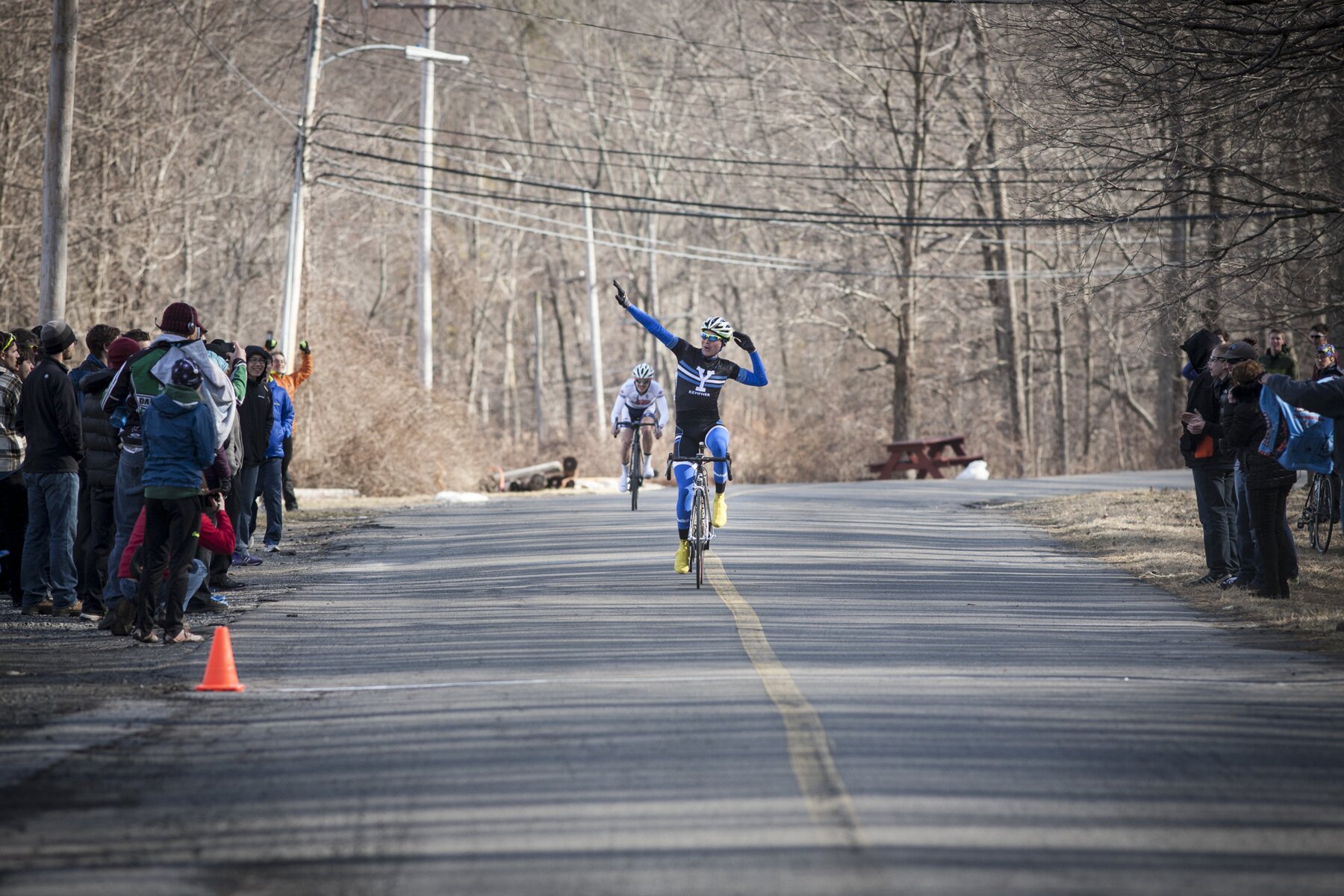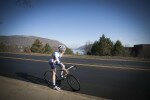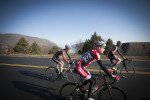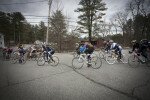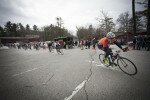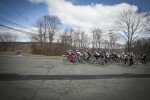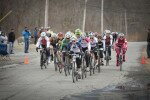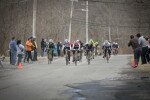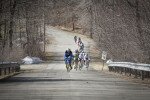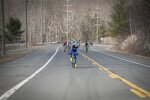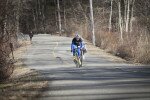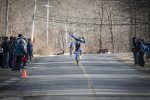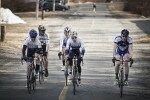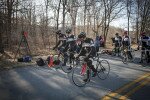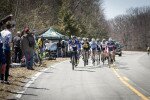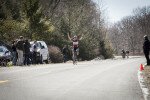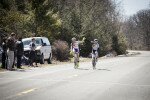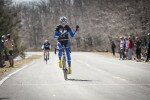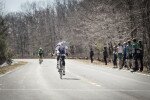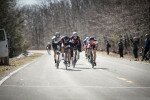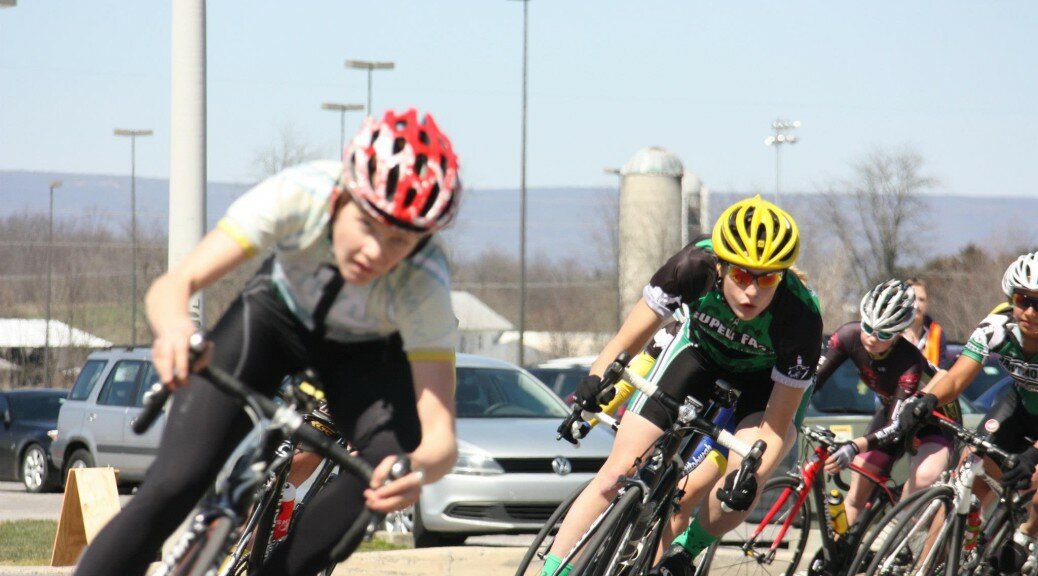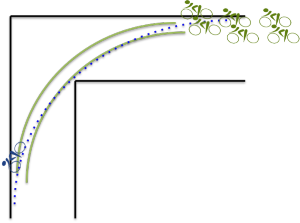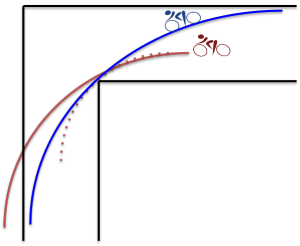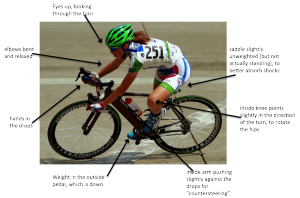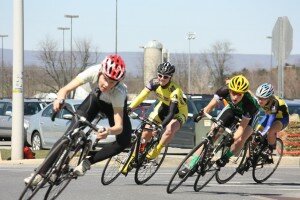Very recently, months after it was published to no doubt much impact, some friends finally noticed Ellen Samuels‘ column article Cycles of Gender Testing, published by the NYU Press blog. It attempts to critique the new-ish transgender athlete policies in the Eastern Collegiate Cycling Conference (ECCC). The crux of Samuels’ argument is that the policy represents a throwback to medieval policies of yore, developed with a biocentric focus and no understanding of gender or sexuality.
Hilariously were it not so frustrating, the post is actually a great exemplar of exactly the type of mindset at which it hopes to throw much snark and scorn: One crippled by assumptions and an inability to have a serious discussion on gender and sports. Further, it’s just poor scholarship and writing: No attempt to contact anyone involved for clarification or discussion was made beforehand, no chance for response given afterward—regrettably, the comments are closed—and it’s very clear that no independent effort was made to understand how that policy might have emerged, or its very nuanced components.
It’s just a short blog post that doesn’t particularly matter, but the piece is worth some commentary from the conference leadership. This is a good point from which to discuss and archive some of the design intent and background of this ECCC policy. More generally the post is also worth looking at as an example of how even people very informed and aware on this kind of topic can hinder their understanding and the debate through their own flawed assumptions.
Policy
The ECCC’s transgender athlete policy is incredibly permissive:
The ECCC particularly recognizes the challenges facing transgender athletes. Such members of the community should compete in the gender category most appropriate to their unique personal situation. They are invited and encouraged to discuss this with the Conference Director(s) and other ECCC leadership.
Competitors may be asked by the Conference Director(s) and/or their designee(s) to furnish two pieces of documentation from relevant legal, medical, or academic authorities documenting personal sex, gender, or gender dysphoria supporting their selected competition gender category.
Particularly for college sports that’s an extremely open position. A very good read here is the Gay, Lesbian & Straight Education Network‘s report On The Team: Including Transgender Students. Though we only found it afterward, the ECCC transgender policy tracks very closely with the report’s recommendations for high school sports, notably much more so than its collegiate suggestions. Similar goes for other reports and existing policies. Compared to typical approaches for college and beyond, the ECCC formally embraces much more of an attitude of “Do whatever makes you happy, everything else be damned.”
That shift in attitude comes in large part precisely from not being biocentric, completely counter to Samuels’ utterly flawed understanding. She writes:
Such [documentation] requirements show how assumptions about the necessity for biocertification can both underpin and undermine even the most well-meaning of policies directed toward people who do not fit neatly into gender binaries. It is likely that, just as in international female athletics, the cyclists most likely to be asked to provide documentation are those who appear suspiciously “masculine,” yet identify as female.
The last sentence is unfortunately probably true, but not in the sense it was written. Samuels fails to envision all of the many likely circumstances that might prompt such a request. More critically, she completely misses the fundamental fact that the “requirement” is there for the exact opposite reason: To protect transgender athletes, and to enable their self-determination and choices.
Clowns
One of our primary motivations for that provision is some regrettable cretin trying to make either an actual socio-political point or merely negative comedy by competing in the “wrong” category. Particularly in some regions of the country, given a completely wide open policy all of us could easily envision, based on previous actual incidents, some cis-male jackass ostentatiously opting to race in and disrupt the women’s fields, either to underline how supposedly ridiculous is the concept of transgender athletes, or simply to be the class clown.
Without the documentation request or some other requirement, there’s little the conference could do about that. If athletes could truly simply elect which gender category to compete in with no restrictive formal policy, then there’s no basis upon which to stop that clown. That would be highly unfortunate, as such a show would be deeply hurtful to actual transgender athletes and broadly supressive of their participation and open welcome, as well as being very disruptive to the competition and disrespectful to all of the athletes. So, in one direction, the requirement is there to protect trans athletes by creating a tool to help shut down very conceivable, very negative demonstrative actions against them.
Legitimacy
On the opposite end of the spectrum, it is unfortunately just as conceivable that at some point opposition will be raised to a “legitimate” transgender athlete. Any open or suspected transgender athlete is going to face a wide variety of challenges in competing, irrespective of how accepting their community may be. They don’t need to also continually face questions about why they’re racing in their chosen gender category, quiet doubts and whispers about the validity of that selection, and so on. The documentation proviso gives conference leadership a tool with which to also shut down all of that negative atmosphere: Community members start raising concerns or complaints about someone, conference leadership privately asks that person for some documentation to show they’re not just some clown or a cheater, they show it, conference leadership affirms to the community that everything is on the up & up and ends those questions and whispers. So, in another direction, the “requirement” is there precisely to provide a formal basis for validating and supporting a transgender athlete’s selection of gender category for competition.
Documents
In doing so, one of the obvious key points Samuels misses is just how slim and broad is that documentation requirement. To repeat:
Competitors may be asked by the Conference Director(s) and/or their designee(s) to furnish two pieces of documentation from relevant legal, medical, or academic authorities documenting personal sex, gender, or gender dysphoria supporting their selected competition gender category.
There’s a lot of nuance packed in there alongside practical understanding of the challenges facing transgender people in our college and high school demographic, enabling a great deal of personal freedom and privacy.
On the one hand, presumably no clown and nearly all cheaters at our level would be unwilling to or have a hard time actually producing any such documentation. On the other hand, nearly all transgender people could meet that criteria, and with minimal intrusion on their privacy. By explicit design it is essentially as close as you can get to a formal version of “Please just give us anything, anything, which we can use to justify your category selection.”
For example, in an amazing and amusing display of massive, pompous self-absorption, Samuels misreads the policy point about “academic authorities” as a reference to the scholarly work of herself and other academic gender theorists. Skipped in that interpretation are important adjectives like “personal” and, most especially, “relevant.” Any less egotistical reader with experience competing in scholastic sports or enforcing gender regulations should immediately understand what that’s actually saying: Any kind of note from school is fine.
In particular, as discussed in previous blog posts, in our demographic of young adults and even juniors starting out on life outside their parents’ homes and shadows, many people are just beginning to think about and potentially recognize an affinity within themselves for non-traditional, non-biological ideas on gender and identity. Many of our transgender athletes won’t have government ID or medical records verifying or tracking their newly formed self images. They could quite likely though come up with something between all three options, especially given the wide latitude granted as to what kind of document is required. School and medical authorities in particular are generally likely to be flexible and swift, with few lifelong effects.
Regarding government, even setting aside universal bureaucratic hurdles and significant consequences of changing identification, many students will have a tough time or be unable to do so simply by advent of living at school, far from home. ECCC policy says that’s fine, get some documentation from the much easier and less consequential avenues of your school or doctor. This is a particularly relevant point because previous national policy in competitive cycling until we forced a change was to compete in the gender given by government ID. We in fact know that to be too rigid, from concrete cases of actual people.
Unusually for the current conference leadership’s typical inclinations to extremely formal and highly delineated rules, this policy is also very specific about not being specific as to what kinds of documentation might suffice. This is an intentional bit of vagueness to enable maximal privacy and options, particularly regarding medical authorities. For example, unlike policies frequently applied at higher levels of sport, the ECCC does not want to see a transgender athlete’s recorded testosterone level history. It also does not care if a rider is undergoing or has undergone a biological transition. Any documentation from a medical authority saying that the athlete’s chosen gender category is appropriate will suffice.
Choices
Of course, the question there of what category is “appropriate” is also intentionally unspecified. For example: Suppose an athlete was born and remains biologically female, but presents formally and socially as a man. What gender category should they compete in? If they race as a man they’ll be socially most comfortable but competitively most disadvantaged. Racing as a woman they’ll compete on level ground but be personally uncomfortable as well as potentially facing any number of doubts and misunderstandings about the fairness of them doing so based on the community’s inevitable assumptions.
On this question the ECCC takes the decidedly not biocentric approach of not taking any stance at all. Either direction they take that athlete is facing a hard decision, and we hope they talk to us about it, but we purposefully ultimately leave that selection where it should be: With the athlete.
Notable here is the explicit reference in the policy to sex, gender, or gender dysphoria. Any but the laziest reader should immediately be disinclined to believe that this policy is backed by simplistic notions equating sex with gender. We specifically recognize the differences between but don’t care about, in a positive sense, anybody’s sex or gender, or how the two may or may not match traditional assumptions and norms. The inclusion of gender dysphoria is a particularly subtle point. We are unaware of any other policy making such an allowance, rather than being based solely on sex and/or gender. Again, the intent is to afford maximal options and privacy. Can’t or don’t want to show documentation of a history supporting a particular gender or sex for competition category? Then any selection could be supported by any medical authority, including a physician, psychologist, or even a counselor, based on dysphoria.
Assumptions
Again amusingly but disappointingly, Samuels’ piece explicitly attacks the ECCC for its assumptions and entrenching bad ones, even while it is she who is actually trucking a great many of them into the discussion, fatally wounding her understanding.
On the surface, no one who actually read and thought about the ECCC policy rather than applying rote assumptions about the treatment of transgender athletes in sports could have possibly viewed it as advocating draconion or even mild biocertification regimes. Further, as discussed above, even setting aside its incredibly unrestricted and wide open criteria, the documentation “requirement” is actually there to protect and enable transgender athletes, providing a basis for them to do whatever makes them happiest.
People
More fundamentally, Samuels’ post is founded on the insulting and grossly prejudiced assumption that the people writing such a policy and involved in the governance of our sport could not be familiar with and understanding of gender theory and associated topics, let alone sympathetic to transgender athletes, nor could they themselves be following non-heteronormative lives.
On the one hand, as conference director and the lead face of policy creation and enforcement, it’s pretty much true that I personally am a cis-male whitebread honkie, and by actual profession an engineer to boot. I absolutely reject though that this necessarily means I don’t have some familiarity with or understanding of gender theory, nor that I can neither emphathize with nor understand and actively support our transgender athletes. In general it patently cannot and should not be the case that only transgender people and gender theorists may participate in this discussion. As Samuels’ post ably demonstrates, formal training in gender theory is clearly neither necessary nor sufficient to make actual contributions to this topic.
On the other hand, Samuels unfortunately and quite incorrectly implicitly assumes that this policy has been neither informed nor crafted by gender theory, let alone actual transgender athlete experience. That is again insulting on several levels, in assuming both that such people are not actively engaged in the sport as well as that their advice and input would not be sought out. It’s also impressively wrong. My understanding is that more than half our committee involved in drafting this policy have non-heteronormative sexualities. More than a quarter are either working on or already have PhDs in gender or queer theory and related topics. Several live everyday, in one way or another, with all the consequences and challenges associated with being transgender, in sport and otherwise.
Despite Samuels’ assumptions that people in sport could not be familiar with gender theory and that transgender athletes could not be engaged in developing the policies affecting them, in the ECCC at least nothing could be further from the truth.
Engagement
In recent years, driven by various mass calamities, there has been occasional general debate about the limited impact the liberal arts have on daily life. History, political science, economics, etc., all have important things to say about critical issues of government and society that are routinely ignored. This is a major driver of movements toward open access scholarship and increasing respect within academia for blogging and other popular writing. Quite obviously, gender theorists, queer theorists, and others might have useful things to say to the general population on topics like transgender athletes. In line with the better points of traditional academics’ suspicions of pop-academia movements though, drive-by hits with lazy blog posts not only don’t accomplish that, they actively retard progress. Nothing will be accomplished if the gender theorists are the ones coming in with crippling assumptions and a failure to recognize and put the effort into addressing their own limited understanding. If Samuels’ post is indicative of what the NYU Press means by “curated content” and “original scholarship” then that particular academia outreach blog effort actually does not have much to contribute and is little different from any number of scrawling-screed sites out there.
Complexity and Progress
Returning to the actual substantive point at hand, this whole topic of transgender athletes in sport is incredibly complex, both broad and deep. Most discussed are of course the top level concepts of biology, policies, and fairness—in multiple competing directions, and with much still developing and even more poorly recognized science.
For the people actually going through these experiences though, and the sports authorities trying to enable and support them, it’s mind-bogglingly pervasive. An eye-opening realization from our experiences this past spring was that a nuts-and-bolts but nonetheless consequential task the conference needs to do to help transgender athletes is to start identifying in race flyers whether restrooms at races will be gender neutral portajohns or gendered built facilities, and if the latter whether they’ll be on private, local, state, or federal ground because of the varying laws associated with each. That’s a whole new level of detail and area of concern we’ve never considered before, and the sort of detail never addressed in high level debate.
Even with very progressive leadership and an overwhelmingly supportive community, these participants face a whole constellation of obstacles. A significant part of overcoming those is policy. As Samuels focuses on and briefly recaps, transgender policy in sports has a long and largely iniquitous history, rife with dubious biocertification programs and unacceptable tests. It doesn’t have to be that way though. Policy can also be a tool to enable these athletes, as we hope it is in the ECCC.
None of this is to say that current ECCC policy is perfect or optimal, though it’s unlikely any policy could be either. There is much room for clarification, formalization, and multiple strong tradeoffs have been made that warrant ongoing debate. For an example on the process side, a tradeoff has been made between the freedom afforded by ambiguity versus potentially unfortunate future decisions under other leadership stemming from such subjective policies. On the more substantive side, the policy implicitly prioritizes the pursuit of happiness for transgender riders over the biological fairness concerns of other competitors. This is a strong stance on the particularly potentially explosive issues surrounding female-to-male biologically transitioned and male-to-female non-transitioned transgender athletes. Our group has also been very clear that we don’t feel this policy should necessarily be applied at all levels. For example, even to us it is not clear that professional, Olympic, and similar elite sport should be as completely biology agnostic as this policy strives to be.
However, all told, the Eastern Collegiate Cycling Conference’s current policies represent a decidedly progressive stance on sports participation by transgender athletes, and one that we hope other organizations adopt. We hope that everyone looking at them will do so without being burdened by their baggage of assumptions, in addition to recognizing all the many possible live circumstances and the need to have formal policies directing the actual conduct of those sports.
